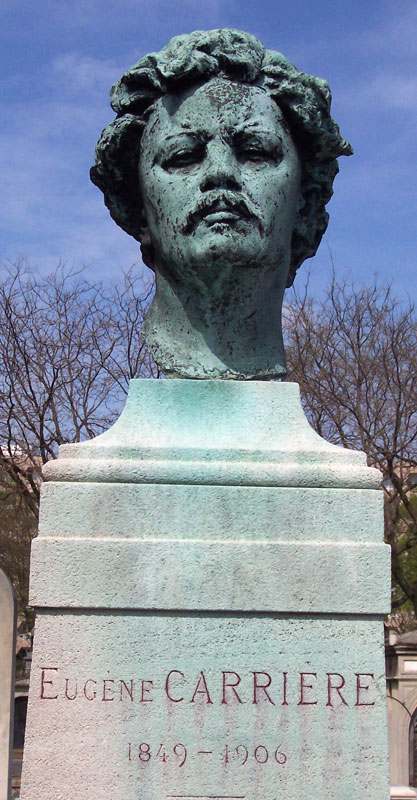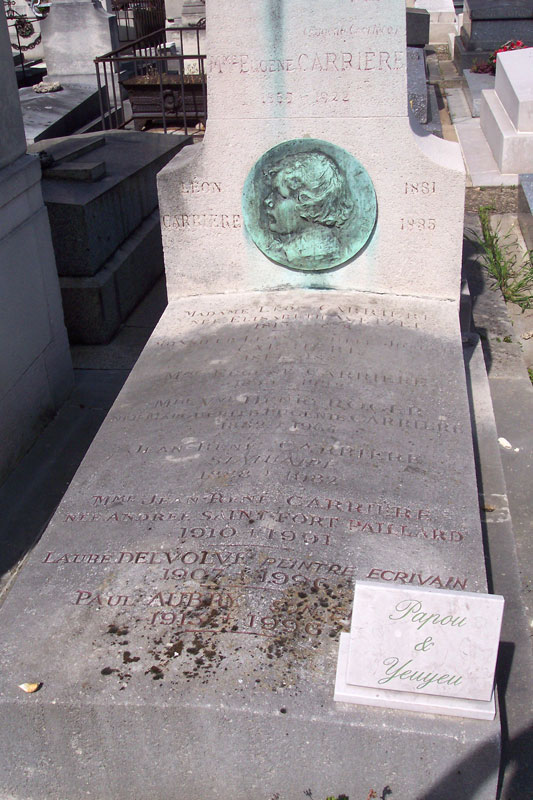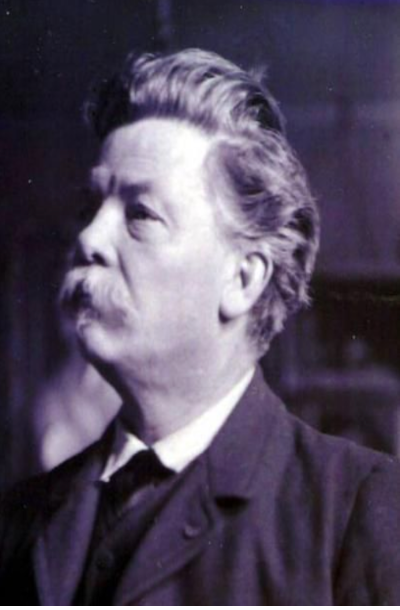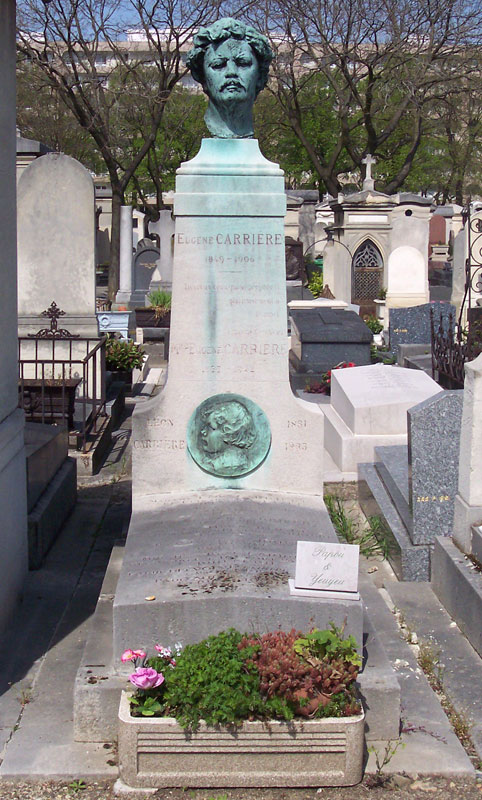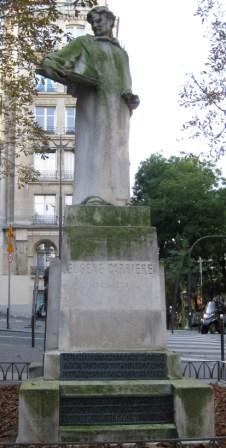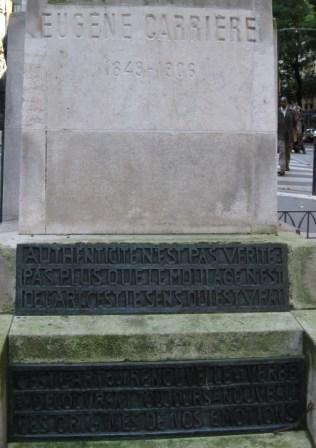Perhaps the most remarkable relationship was Carriére's long, mutually supportive friendship with Auguste Rodin. Together with Puvis de Chavannes, the two friends were founders of the dissident salon of The Society National Des Beaux Arts in 1890. Reflecting a deep appreciation of one another's art, Carriére came to his friend's defense when the controversy over Rodin's Monument to Balzac erupted in 1898. Six years later, Rodin organized a great public banquet to honor Carriére's achievement. This exhibition includes Carriére's lithograph of Rodin Working, created at his friend's request to announce the sculptor's great retrospective of 1900, and Rodin's Hero, conceived as part of a proposed monument to the painter.
Carriére's circle also included poets, such as Paul Verlaine, whom he portrayed in a richly nuanced lithograph lent by Kirk Edward Long. In addition, the painter's friends included politicians, such as Georges Clemenceau and Henri Rochefort, whose portrayal by the Carriére and Rodin suggest contrasting responses to this vociferous radical. Among the critics, Carriére's friends included Edmond de Goncourt, and the very influential Roger Marx, who is portrayed in a luminous oil sketch by Carriére and a spare, classical profile by another friend, Odilon Redon. The Carriere circle was also broadened by artists he influenced, notably pictorialist photographers such as Edward Steichen and Alvin Coburn.
"Although Carriére was consigned to critical oblivion for much of the 20th century, he continued to inspire admiration among some artists," explained Cantor Arts Center Chief Curator Bernard Barryte. "These included the Bay Area master Nathan Oliveira, who donated several works in the exhibition including his own Homage to Carriére (1963). Following on several recent exhibitions reassessing Carriere's work, Mutual Admiration explores his influence at the center of one of the most dynamic artistic coteries active in fin de siécle Paris."
Bio written by Find a Grave member Jayne (link to her page through the photos she posted)
Perhaps the most remarkable relationship was Carriére's long, mutually supportive friendship with Auguste Rodin. Together with Puvis de Chavannes, the two friends were founders of the dissident salon of The Society National Des Beaux Arts in 1890. Reflecting a deep appreciation of one another's art, Carriére came to his friend's defense when the controversy over Rodin's Monument to Balzac erupted in 1898. Six years later, Rodin organized a great public banquet to honor Carriére's achievement. This exhibition includes Carriére's lithograph of Rodin Working, created at his friend's request to announce the sculptor's great retrospective of 1900, and Rodin's Hero, conceived as part of a proposed monument to the painter.
Carriére's circle also included poets, such as Paul Verlaine, whom he portrayed in a richly nuanced lithograph lent by Kirk Edward Long. In addition, the painter's friends included politicians, such as Georges Clemenceau and Henri Rochefort, whose portrayal by the Carriére and Rodin suggest contrasting responses to this vociferous radical. Among the critics, Carriére's friends included Edmond de Goncourt, and the very influential Roger Marx, who is portrayed in a luminous oil sketch by Carriére and a spare, classical profile by another friend, Odilon Redon. The Carriere circle was also broadened by artists he influenced, notably pictorialist photographers such as Edward Steichen and Alvin Coburn.
"Although Carriére was consigned to critical oblivion for much of the 20th century, he continued to inspire admiration among some artists," explained Cantor Arts Center Chief Curator Bernard Barryte. "These included the Bay Area master Nathan Oliveira, who donated several works in the exhibition including his own Homage to Carriére (1963). Following on several recent exhibitions reassessing Carriere's work, Mutual Admiration explores his influence at the center of one of the most dynamic artistic coteries active in fin de siécle Paris."
Bio written by Find a Grave member Jayne (link to her page through the photos she posted)
Sponsored by Ancestry
Advertisement
Records on Ancestry
Sponsored by Ancestry
Advertisement



